Sunday, 15 August 2010
Sunday, 6 December 2009
Thursday, 3 December 2009
Thursday, 26 November 2009
Saturday, 16 August 2008
Gotham impressions
It is said that as in New York it is 3 in the afternoon in Europe it is 9 PM of ten years before.
In spite of its relatively short history as a city (the Dutch founded New Amsterdam on Manhattan's southernmost tip in 1624), you get the feeling you find yourself right in the middle of a place where big things happened and continue to happen. As if the History, to compensate for a late start, raced by at vertiginous speeds.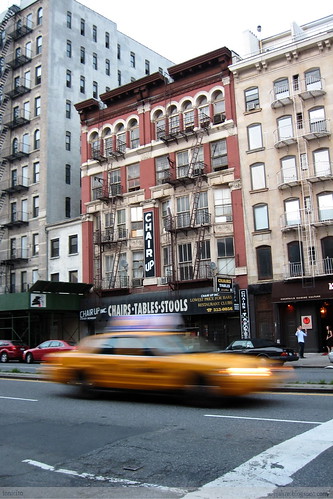
That's maybe the reason why New Yorkers live fast: people talk fast, people eat fast, cabs drive fast, pedestrians walk fast, people laugh fast and, I guess, they dream fast. Or maybe it is the other way around, and it is precisely them who accelerate the Big Clock's pace with their uncorrectable crossing in red and their never ending horn symphonies.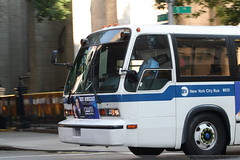
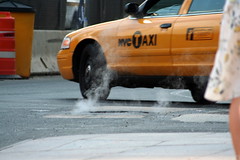
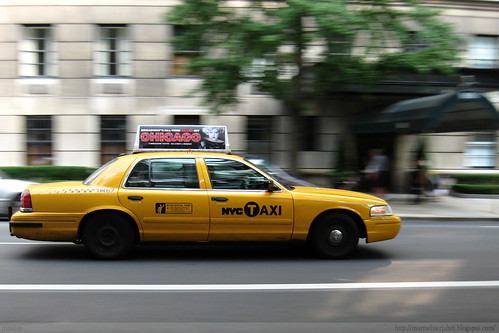
New York City has a soul, even though the multiple and surprisingly contradictory identities she possesses, turning one into the other as you walk few steps, even as you cross to the other side of the street. This is nothing new, though. Visitors to the seventeenth century Dutch settlement marveled that eighteen separate languages were spoken on its streets at a time when its total population was below one thousand. But New York City has a young and strong soul. You just need to stand in the middle of the street, in the middle of the roar, to feel its powerful beat below your feet.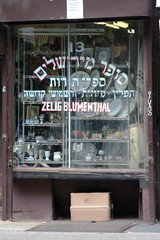
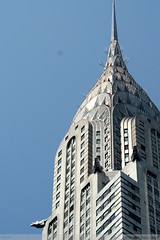

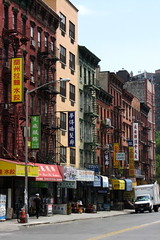
New York City conveys a strange feeling of familiarity in all her faces, in all her images. No matter where you look at, a known icon will impress your retina, the frame of that one movie, a picture that maybe never existed, but which was long ago digested by the collective subconscious after decades of audiovisual exports. 

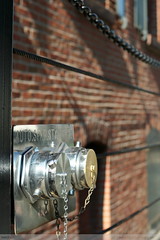

As you walk out the door, you face the most difficult decision of the day: should we turn to the left (to the south, downtown) or to the right (to the north, uptown)? But in fact it's the same, because this city is great in all directions.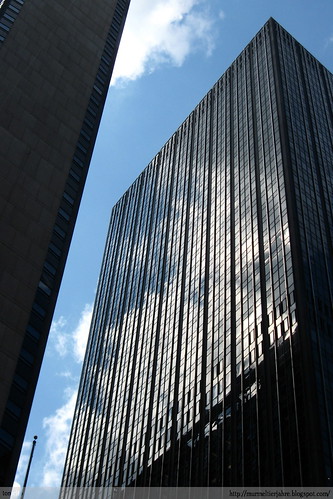
It is said that comic editors gave instructions to new illustrators and writers to help them with the locations for their stories. Metropolis, Superman's city, is Manhattan's Midtown on a sunny day at noon. Gotham, Batman's city, is Downtown Manhattan on a rainy night. And Harlem is Harlem, of course. We could walk around Metropolis to exhaustion. But unfortunately we did not get the chance to see Gotham. The only time it rained we were in Harlem.
Sunday, 3 August 2008
The City (with a capital C)
We've just come back from the City with a capital C, the city that all the other cities wish they were.
In his Historias de Nueva York (New York Stories), Enric González tells that, in order to survive in The Big Apple, you need to have good luck.
As we arrived to the apartment we had this last week, the owner, Chris (who, incidentally, could perfectly appear in a Paul Auster novel) wished us Good luck!
And it was in that same moment that I knew, although I did not dare saying it loud, that everything would be perfect, and that we were going to miss that city as soon as we take the train to the airport. And so it has been.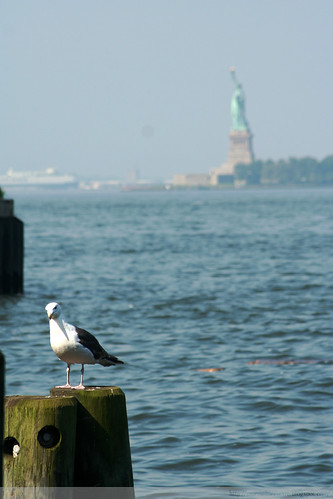
I have not been able to sleep for 28 hours now. Clearly, sleeping in planes is not my thing. I hope tomorrow I am some more of a person and tell something more. Until then, good luck!
Monday, 21 July 2008
City of Blinding Lights
The less you find out as you go
I knew much more then than I do now
Neon heart dayglo eyes
A city lit by fireflies
They’re advertising in the skies
For people like us
And I miss you when you’re not around
I’m getting ready to leave the ground….
Ooh ooh ooh
Ooh ooh ooh
Oh you look so beautiful tonight
In the city of blinding lights
Don’t look before you laugh
Look ugly in a photograph
Flash bulbs purple irises
The camera can’t see
I’ve seen you walk unafraid
I’ve seen you in the clothes you made
Can you see the beauty inside of me?
What happened to the beauty I had inside of me?
And I miss you when you’re not around
I’m getting ready to leave the ground
Ooh ooh ooh
Ooh ooh ooh
Oh you look so beautiful tonight
In the city of blinding lights
Time… time
Won’t leave me as I am
But time won’t take the boy out of this man
Oh you look so beautiful tonight
Oh you look so beautiful tonight
Oh you look so beautiful tonight
In the city of blinding lights
The more you know the less you feel
Some pray for others steal
Blessings are not just for the ones who kneel… luckily
Sunday, 23 December 2007
Driving home for Xmas...
Well, actually we didn't drive, we flew home. But the spirit is the same as in the song, because we started our travel (almost our journey!) yesterday in the morning and we arrived home at night. But it's really nice to meet (again or, in some cases, for the first time in person!) with those who have been supporting me all the time.
I am quite excited about these Xmas! :)
Tuesday, 4 September 2007
Exploring Austria (v)
We spent the last days of our vacation in Munich. I know Munich is not really in Austria, but I could not resist the thrive for completeness and I called this post "Exploring Austria (v)" to set an end to my (hopefully not boring!) vacation series.
One of the biggest clashes that we experienced as we moved to Salzburg was the contrast between life in a (quite) big city like Barcelona and life in a (quite) small city like Salzburg. I think this might have been as hard as the different language or the different mentality.
We miss the big city. We miss its constant beat, its life, its breath. Even after three years, we still have not got used to not being able to watch any interesting movie for a month, because there is really no interesting movie going on for a month (!!). We miss the perfect anonymity that only a big city can provide. We miss the wonderful mixture of people that you'll only find in a big city. I even miss that feeling when you get into a bus and you know that, even after a one hour ride, you'll still be in the city.
I guess that's why we go so often to the big cities around. Munich is the one closest to us, and it is always worth another visit. Maybe because of the strange attraction that I have about some of the darkest passages in its recent history. Surely because of the Viktualienmarkt, where the most incredible products may be found, where the hobby photographer gets really crazy and from where you actually can feel the heart of the city.
Maybe because the Englischer Garten always invites to take off your shoes and feel the grass on your bare feet. Surely because of the irresistible combination of a couple of Münchner Weißwürstel with sweet mustard and a Weißbier. Maybe because you can find the most incredible restaurants in Schwabing (our latest discovery was Ignaz, a vegetarian so good that we had to have dinner there two days in a row!).
We really enjoyed our stay and it was a perfect finale for a great vacation. Most of all, because Munich is, above all, gemütlich!
Tuesday, 28 August 2007
Exploring Austria (iv)
Our next visit was Burg Hohenwerfen, where we were again astonished by the spectacular flight demonstration of the birds of prey, although the weather conditions on that day were not really good. There was no wind and the poor eagles, and especially the vulture, had it really difficult to take off and to get some altitude.
It is always worth it to see the birds at Hohenwerfen Castle.
On the same day we visited the Eisriesenwelt in Werfen, allegedly the world's biggest ice caves with galleries spanning 42km under the mountain. The guided visit takes one hour and even though some of the caves are as big as cathedrals, sometimes you have to go through really narrow and dark passages, not really friendly if you suffer from claustrophobia. It was a pity that no photos were allowed inside the cave (mainly to avoid broken groups of visitors, and that someone gets lost inside the cave) because some of the ice formations are really incredible. The temperature on the inside keeps constant and slightly over 0°, not depending on the outside temperature, so we had to get ourselves some warm clothes before going in.
On the next day we went to the Großglockner Hochalpenstraße, the highest alpine road in Europe (read more about the Austrian need for numerical precision in a previous post). This road crosses from North to South through one of the most important passes on the Eastern Alps, the Hochtor at an altitude of 2504m, which has been continuously used for a long long time (yes, the Romans were already there, but they were not first). The highest point of the road, the Edelweißspitze (Edelweiss peak), has an altitude of 2571m. I love this road because you go through the different types of flora as you drive higher and higher.
The Swarovski look-out and the Großglockner and Johannisberg in the background.
The road continues to Kaiser-Franz-Josefs-Höhe, at 2369m, with an insuperable view of the highest peak in Austria, the Großglockner (3798m), and of the largest glacier in the Eastern Alps, the Pasterze, 9km long approximately. It is said that in 1856, as Emperor Franz Joseph ascended up to this point (hence the name), the glacier reached up to there. Today it has lost half of its volume and there is a cable car to go down, which in 1963 arrived at its foot, but now there are still 300 steps downwards to reach it.
The marmots had still not got enough food from tourists and looked at us.
Besides mountain and glacier, marmots and ibexes are the big highlights. Spotting marmots is relatively easy, especially if you arrive early in the morning, before the tourist hordes have fed them massively with apples, bread and cookies, and they retire to their dens to digest everything. The ibexes, also called by their German name, steinbocks, are shy and not willing to be near humans. To see them you need a little good luck, lots of patience and good binoculars. We only spotted one ibex, far far away, under the shadow of a rock.
Our day ended with a visit to the Krimml waterfalls, the highest in Austria with their 380m divided in three sections. A path goes up the waterfalls, and you can look at them and hear them roaring from little balconies each two or three hairpins. In some of them you are likely to miss a raincoat!
The Krimml Waterfalls. In the picture you see the middle and lower sections.
Two days of records, then:
- Eisriesenwelt, biggest ice caves in the world
- Großglockner Hochalpenstraße, highest mountain road in Europe
- Großglockner, highest peak in Austria
- Pasterze, longest glacier in the Eastern Alps
- Krimmler Wasserfälle, highest waterfalls in Austria
The last part of our holidays brought us to Munich in Bavaria...
Thursday, 23 August 2007
Exploring Austria (iii)
We left Neusiedler See under a violent rainstorm that made us change our original plan to go through a mountain road to Semmering and Mariazell, and we decided to go directly to Graz.
Even though Graz is a very nice city that deserves an own post, this visit was so "blitzy" that I can't leave any fotos. After enjoying some delicious Ochsenherzenparadeiser (literally, ox heart tomatos; that's how those huge and sweet tomatoes are called) and walking up the Schlossberg, we hit again the road to visit Saint Barbara church in Bärnbach.
Hundertwasserkirche shines magically in the sunset. I love tomato photography because of its roundness.
When the church needed renovation, the town council decided to let Friedensreich Hundertwasser take the project. And looking at the result, I think it was definitely the right decision! A walk around the church leads through a number of colourful gates representing world religions. There is even a gate without any symbol for the atheists! Afterwards we continued our way home to Salzburg, which was our base for the following visits.
We visited Hohensalzburg fortress in Salzburg, enjoying the magnificent views of the surroundings. Legend has it (and tourist guides as well) that this fortress was never taken by any enemy. Given the slope that one has to walk up to reach it, I understand it totally.
On the next day we did our favourite Salzkammergut tour. The landscape in this lake district is smooth, green and perfect, as if you were in a model train. Hallstatt, one of the eight World Heritage Sites in Austria, hangs impossibly between the vertical Dachstein walls and the Hallstätter lake. Besides of giving name to an Iron Age culture, Hallstatt is one of my favourite towns in Austria (with permission from the newly discovered Rust). I love its narrow streets, finding little details behind every corner, walking on its roofs, and the fact that the lake and the mountains make for the perfect background to every angle...
The ossuary at the Catholic church in Hallstatt preserves skulls with their owners' names written down, decorated with little crosses and flowers. Other countries, other fashions... ;)
After an inexcusable visit to Zauner pastry shop in Bad Ischl (the same that served cakes to Empress Sissi), we ended the day taking a walk that skirts the Wolfgangsee not far away from Sankt Gilgen.
The next days brought us to the Großglockner high alpine road, to Krimml waterfalls and, last but not least, Munich...
Wednesday, 22 August 2007
Exploring Austria (ii)
The second stage of our journey brought us into the East, to Lake Neusiedl, on the Austrian-Hungarian border. It is called Neusiedler See in German and Fertő tó in Hungarian. I love Hungarian words because they sound strong and powerful, as if you could throw them out your mouth like darts.
The Fertő tó is a so called steppe lake or endorheic basin (now that's an ugly word!), that means, its waters do not outflow through any river or sea, only by seepage and evaporation. The lake is never more than 1.8 meters deep and it is famous for its almost constant wind, which attracts sailing and windsurf lovers, and for being surrounded by reeds, which attracts a large number of migratory birds as a resting place.
The landscape around the lake is quite flat and its flora is wild and untamed, which reminded me of the Mediterranean coasts I miss. Vineyards cover the place as far as you can see, and the smallest terrain elevation constitutes an excellent vantage point, the lake always in the background. I know it doesn't sound very exciting, but after almost three years of living around green alpine landscapes, to discover the other side of the country was a very nice surprise.
The town were we camped is on the left bank of the lake and is called Rust. And I think it will be, from now on, my favourite Austrian town, excusing Hallstatt, about which I am going to talk very soon. Rust bought its free town status to the Hungarian Crown on the 17th century, by means of gold and Ruster Ausbruch wine. The town possesses some medieval houses and I did not have that annoying feeling of being in a film set that I have in most Western Austrian towns. Anyway, the actual main characters in Rust live on its roofs. It is said that up to 50 couples of storks nested in Rust every summer. Nowadays there are not that many storks anymore, but we easily counted more than 20 on the main street. Hearing how they greet themselves with their beaks I felt a lovely peace of mind, only to be matched by enjoying the evening with good wine and Schmankerl (sausages, cheese, cold appetizers served as side dishes for the wine)
The Neusiedler See and its surroundings are perfect for a bike tour. We rented bikes and explored the roads, having them carried by ferries when we crossed the lake. We tried to watch some migratory birds on the National Park on the other side, but we had no success. Nevertheless, landscape and details were enough to make me fall in love with this remote Austrian region.
When the lake freezes in winter the reeds are chopped and dried to be used as cold isolation in houses.
Our journey continued then to Graz, Styria, and to the St Barbara church in Bärnbach, and later to Salzburg...
Monday, 20 August 2007
Exploring Austria (i)
After some silent days, I take again Die Murmeltierjahre im Land des Frühschoppens after the holiday break. We've been exploring Austria with our friends D., E. and R. for two weeks.
I am going to invite my visitors to one of those scary "come home and I'll show you my holiday pics" sessions, but this time there are two great advantages: first, it is going to be divided in several parts, and second, everyone is completely free to stand up and go away as soon as it gets too hard. I won't notice! Can't get mad! ;)
Let's begin with the first part of our trip: Melk Abbey and Vienna.
Melk is a city of the federal state of Lower Austria, next to the Wachau valley along the Danube. This valley is famous for its apricots (Marillen) and for the beauty of the apricot trees in the spring. The city of Melk is famous for its Benedictine Abbey. Those of you who have read The Name of the Rose will remember that William of Baskerville's young Benedictine disciple was Adso of Melk. Precisely.
The jewel of the library was one of Gutenberg's original Bibles. Unfortunately, the monks had to sell it in order to pay for reconstruction works in the Abbey. The Baroque style, especially in the abbey church, was a little too oppressive for me.
The second stop in our trip was Vienna. With that interesting contrast between its Imperial excesses on the inner side of the Ringstrasse and the lovely Eastern city flair to be seen as soon as the district number has two digits. Inevitable visit to Schönbrunn, together with another hundred thousand tourists, but we made up for it by feeding little birds and squirrels, and later with Hundertwasser's buildings, with a walk through the old Jewish Town (at least that was our guess, because of the street names) and with yet another visit to the Naschmarkt.
I decided to use B&W for Schönbrunn because this way the pictures appear less familiar and rather antique and the tourists seem to disappear.
The Naschmarkt always surprises us with new vegetables to be inmortalized.
After spending two nights in Vienna, we left for the next stop of our journey: the Neusiedler See, the second largest steppe lake in Central Europe, on the border with Hungary...


 versión en español
versión en español






